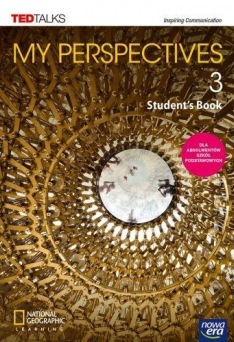II liceum
Język angielski
Lista zadań Strona 71
Strona 71
- Strona 4
- Strona 5
- Strona 6
- Strona 7
- Strona 8
- Strona 9
- Strona 10
- Strona 11
- Strona 13
- Strona 14
- Strona 15
- Strona 16
- Strona 17
- Strona 18
- Strona 19
- Strona 20
- Strona 21
- Strona 22
- Strona 23
- Strona 25
- Strona 27
- Strona 29
- Strona 30
- Strona 31
- Strona 32
- Strona 34
- Strona 35
- Strona 36
- Strona 37
- Strona 38
- Strona 39
- Strona 40
- Strona 41
- Strona 43
- Strona 45
- Strona 47
- Strona 48
- Strona 49
- Strona 50
- Strona 51
- Strona 52
- Strona 53
- Strona 54
- Strona 55
- Strona 56
- Strona 57
- Strona 59
- Strona 61
- Strona 63
- Strona 64
- Strona 65
- Strona 66
- Strona 68
- Strona 69
- Strona 70
- Strona 72
- Strona 73
- Strona 74
- Strona 75
- Strona 77
- Strona 79
- Strona 81
- Strona 82
- Strona 83
- Strona 84
- Strona 86
- Strona 87
- Strona 88
- Strona 89
- Strona 90
- Strona 91
- Strona 93
- Strona 95
- Strona 97
- Strona 98
- Strona 99
- Strona 100
- Strona 102
- Strona 103
- Strona 104
- Strona 105
- Strona 106
- Strona 107
- Strona 108
- Strona 109
- Strona 111
- Strona 113
- Strona 115
- Strona 116
- Strona 117
- Strona 118
- Strona 119
- Strona 120
- Strona 121
- Strona 122
- Strona 123
- Strona 124
- Strona 125
- Strona 127
- Strona 129
- Strona 131
- Strona 132
- Strona 133
- Strona 134
- Strona 135
- Strona 136
- Strona 137
- Strona 138
- Strona 139
- Strona 140
- Strona 141
- Strona 142
- Strona 143
- Strona 145
- Strona 147
- Strona 148
- Strona 149
7
Listen to part 3 of the talk. Match the events (a–c) with periods of time (1-2). Use one of the periods twice.a The TED organisers invite Tim to do a talk.b Tim starts working on his TED talk.c Tim's photo is put on the TED website.1 one month2 six months
8
Listen to part 4 of the talk. Which statement is not true according to Tim? 1 Self-starters are people who stop themselves procrastinating.2 It is difficult to stop procrastinating when there are no deadlines.3 Procrastinating stops many people from achieving their dreams.
9
Listen to the sentences from the TED Talk. Check if you know the meaning of the words and phrases in the box. big deal long-termon one's mind starelose one's mindaware
10
Think of examples of the following things. Then work in pairs and compare your examples.1 Things that people make a big deal about but which aren't that important in your opinion.2 Things you've had on your mind recently. 3 Reasons why people sometimes stare. 4 Any long-term plans or goals you have.5 Things you might not be aware of if you are wearing headphones and listening to music in the street.
11
Work in groups. Look at the different things that people do to stop procrastinating and getting distracted. Which tips would help you? Discuss.1 Break jobs into small steps. Give yourself mini-deadlines for each step. Tick the deadlines that you meet on time. Reward yourself with ten minutes to do fun things.2 Download an app on your computer that stops you visiting your favourite websites.3 Plan your next week by writing a list of things to do each day.CHALLENGEWork in pairs. Tim believes that 'everyone is procrastinating on something in life'. Tell your partner what you are procrastinating about and why.
